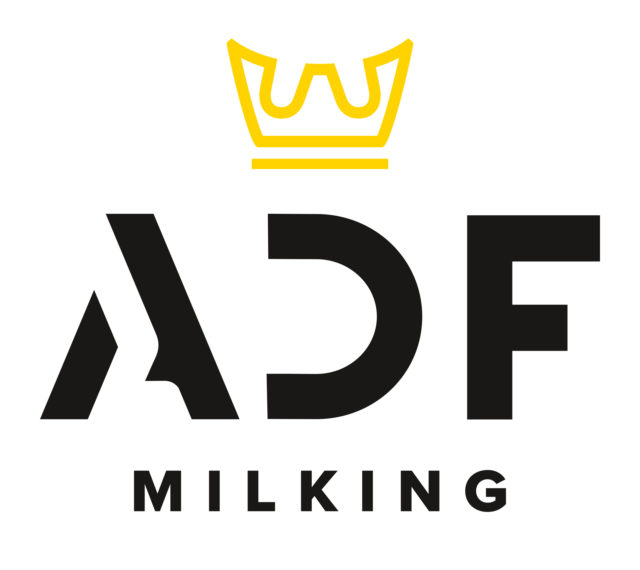Mastitis is an ongoing problem faced by every dairy farmer. With eradication currently unachievable, preventing new infections is the most important management practice for combating this endemic disease. Mastitis costs the U.S. dairy industry around $2 billion annually. Treatment costs are significant, and rejected milk and reduced payments for low-quality milk impact the bottom line. Compromised yields from unwell cows and the necessity to cull cows with recurring infections further add to the pain.
Technology and automation are helping the modern farmer deal with the daily demands of herd and parlor management. Robotics are becoming commonplace in modern dairies, from fully automated milking machines with no human required to simple automated cluster removers. There is also technology to help with the identification of mastitis cases within the herd, known as automated mastitis detection (AMD).
Electronic milk meters fitted to the milk lines in the parlor indicate somatic cell count (SCC) levels by measuring the electrical conductivity of the milk. Somatic cells are always present in milk. The electrical conductivity method uses increased salinity levels of the milk caused by mastitis infections to measure changes in electrical conductivity. These changes are indicators of infection and are used to raise alerts of high SCCs.
Data gathered by milk meters is used in a variety of ways depending on the system. Electronic identification (EID) is an essential part of these systems. An electronically equipped eartag enables individual animals to be identified in their stall as they are milked. Intel collected from milk meters will relate to each individual cow and can include her production figures, mastitis infection risk and, in some cases, fertility status. This information is logged against the cow's EID and can be used to automatically sort her into a specific group and track her ongoing health. This is valuable information for herd management decisions.
All of this requires substantial technology and automation; EID tags on each cow and tag readers in the parlor to identify each individual in her stall as she is being milked, milk meters to gather the data, automated sort gates to manage cows into groups, and an operating system to record and display results and control the automation. Not every dairy farmer needs this level of technology. The old ways still work, they just take time, lots of time, and people, people who understand the big picture that is mastitis.
Traditionally, the most commonly used method to identify mastitis cases is to simply strip a little milk from each quarter of the udder and look for abnormalities in the samples. People in the parlor need to be able to recognize these abnormalities. They then manually apply spray markings onto the udder to indicate infected quarters – tasks that require trained and engaged people. The California Mastitis Test (CMT) is another method of identifying infections. This test uses a handheld paddle with four separate dishes. It is held under the udder while a sample is manually taken from each quarter of the udder into each dish and a chemical is added. Color and viscosity changes to the mixture indicate the presence of mastitis.
The CMT method is still used to identify infected quarters in cows that have been flagged by milk meters as having a mastitis risk. These cows will often be sorted into a hospital herd and treated by trained people. As the quarters of the udder are separated, understanding which quarter is infected means treatment is targeted, reducing the use of antibiotics and saving money.
Once a cow with mastitis has been identified and the affected quarter isolated, treatment is necessary. Broad-spectrum antibiotics are commonly used as they are effective against a range of bacteria that cause mastitis.
However, targeting treatment to the specific bacteria causing the infection has several benefits. It results in quicker recovery for the cow, faster return to production and less use of broad-spectrum antibiotics, which is better for the long-term health outcomes of the herd. Traditionally, identifying the bacteria causing the infection involved sending a sample to a lab, waiting for the results, and then prescribing and administering a treatment, which could take several days.
Technology can help in this space too. Parlor mastitis testing devices, usually in the form of a bench-top plug-in box connected to the internet, are available providing details on the infection and a treatment plan within 24 hours.
All these automation smarts are great, but when it comes to mastitis, the adage of “prevention is better than cure" definitely applies. The preemptive strike strategy is the prudent way to mitigate mastitis. Reducing the incidence of new cases of mastitis in the herd is a front-end approach to staying on top of this insidious daily problem.
Automation for dealing with teat hygiene provides certainty to dairy farmers still relying on people to do these jobs. Pre- and post-milking automated teat sprayers are widely available.
"Teat spraying is still the most important single thing you can do to reduce the spread of mastitis,” Steve Cranefield, DVM, says. “The reason for this is that every time you apply cups (clusters) to a cow, you are passing bacteria to the teats of the next cow to be milked. These bacteria can then enter the teat canal and cause mastitis."
Teat spraying before milking disinfects the teats, killing mastitis-causing bacteria. This reduces the incidence of bacteria entering the teat canal during milking, causing infection and then being passed on to subsequent cows sharing the same cluster. Teat spraying after milking is vital, killing residual bacteria on the surface of the teats and protecting the udder from the invasion of mastitis-causing bacteria into the open teat canal. The period after the cluster is removed and before the teat canal naturally closes is the most vulnerable time for cows to become infected with mastitis-causing bacteria.
Long before automation came along, farmers have known the value of sanitizing teats before milking, and protecting and conditioning teats after milking. Teat dipping is still widely used and is a manual task where a person dips each teat in a cup of teat dip. Teat spraying is automated, but it can also be a manual task where a person sprays teats using a handheld spray gun. Automated teat spraying can eliminate human error and prevent mastitis long before an infection occurs.
The savings for farmers adopting automated teat spraying are reducing the wages bill in the parlor, but it goes beyond that. Having the most important thing to help minimize mastitis in the herd happening automatically makes sense by providing prevention and protection against mastitis – the problem that causes pains in the pocket of every dairy farmer.





